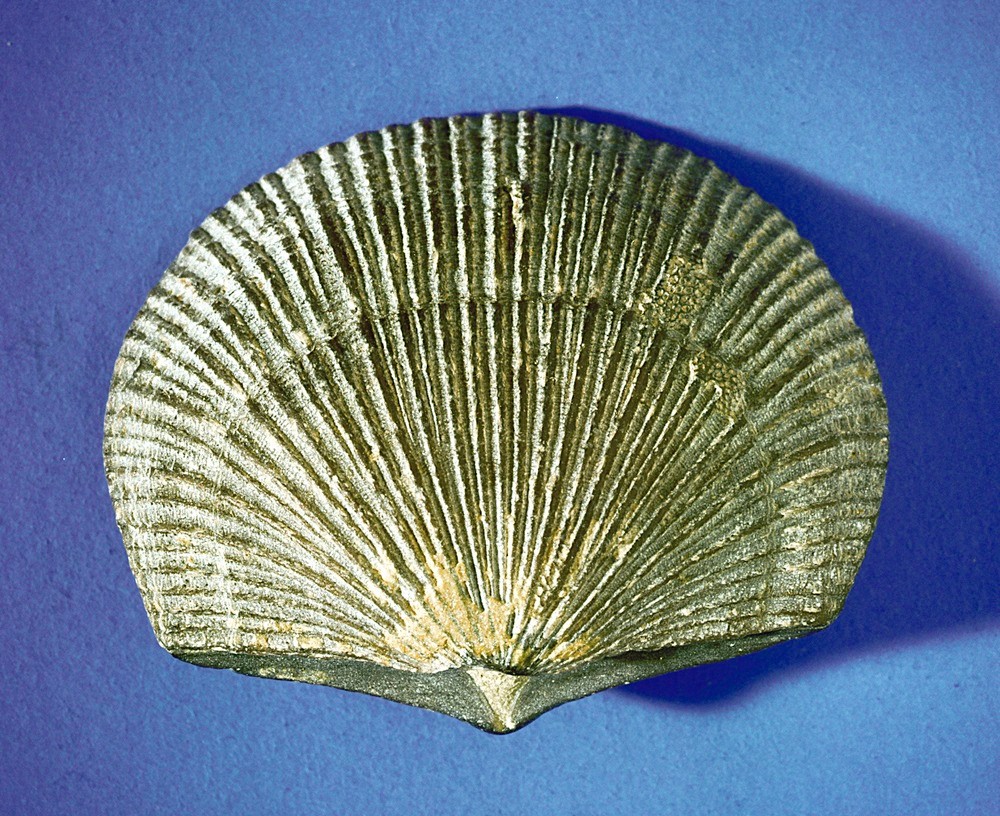| P number: | P549564 |
|---|---|
| Caption: | Dolerorthis, a Palaeozoic brachiopod, a fossil brachiopod. |
| Description: | Dolerorthis was a brachiopod that lived during the Palaeozoic times, evolving in the mid-Ordovician and becoming extinct in the late Silurian (about 420-470 million years ago). It has a wide geographical distribution throughout the northern hemisphere. Dolerorthis has a triangular opening for the pedicle (a fleshy stalk used to attach the shell to the substrate) in the larger and more swollen valve. The brachial valve is smaller and flatter. It has well-formed ribs radiating out from the umbo (the pointed 'beak' at the top of the illustrated specimen). Inside the shell the calcareous structure that supported the soft parts of the animal may be preserved, but this is exceptionally rare. Brachiopods have a very long history. The oldest species lived during the earliest Cambrian time (545 million years ago) although strange animals that look like worms, but with a brachiopod-like shells each end suggest they evolved during the late Precambrian. They were particularly commmon during the Palaeozoic times (248 to 545 million years ago), but today they are rather rare. These animals are almost entirely marine, although some live in brackish waters. They have a shell usually attached to a firm substrate like a rock, by a pedicle, a fleshy stalk that extends out of an opening in one of the valves (the pedicle valve). The two valves are hinged so that they can be opened to allow water and food particles to wash through. Calcareous supports for the internal organs are sometimes preserved in fossils. |
| Photographer: | Unknown |
| Copyright statement: | Unknown |
| Orientation: | Landscape |
| Size: | 594.56 KB; 1000 x 816 pixels; 85 x 69 mm (print at 300 DPI); 265 x 216 mm (screen at 96 DPI); |
| Average Rating: | Not yet rated |
| Categories: | Best of BGS Images/ Fossils |
Reviews
There is currently no feedback

